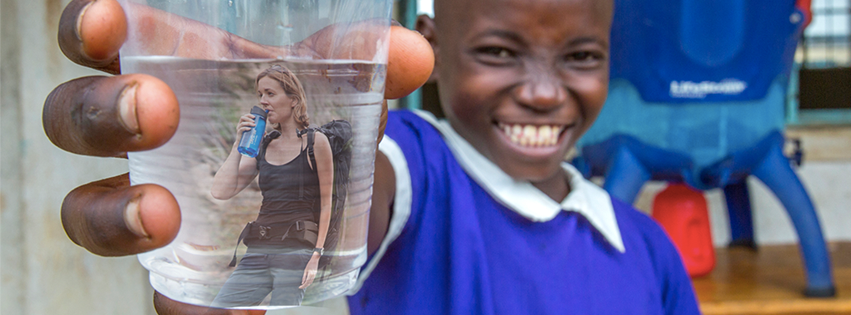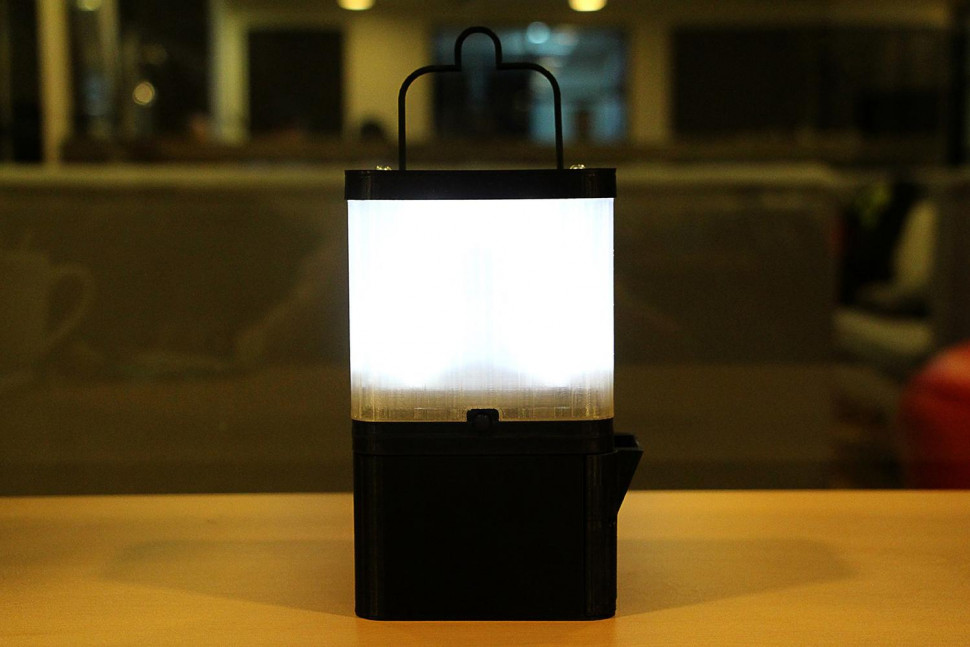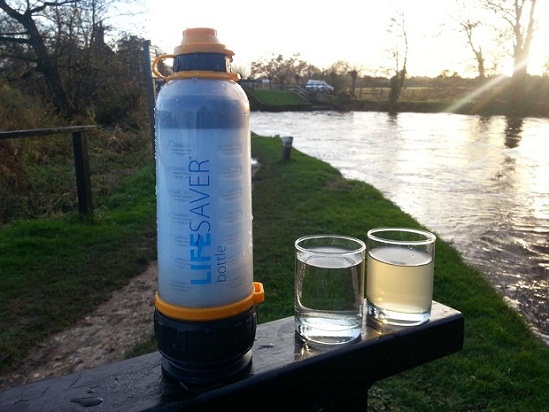
by GaiaInnovations | Oct 16, 2016
Award-winning LifeStraw technology was originally introduced in 2005 as an emergency response tool to filter water contaminated following natural disasters.
The LifeStraw team is committed to redefining the safe drinking water space through technology innovation and product quality and design. In doing so, our work is driving sustainable access to safe drinking water by engaging governments, donors, and individual consumers to understand the problem and become an active part of the solution.
How does the LifeStraw work?
The LifeStraw uses hollow fibre micro filtration to mechanically remove contaminants down to 0.2 microns. Imagine really small tubes with even smaller pores that trap contaminants, but allow water to flow through. You can stick the LifeStraw directly into a river, lake, stream or other open, fresh water source and drink water directly from the straw! This means that dirty water goes into the LifeStraw, microorganisms are physically removed and safe drinking water comes out.
All LifeStraw products do not use chemicals, do not require pumping and do not require any energy input (like batteries).
This information comes from the website of LifeStraw.

by GaiaInnovations | Oct 8, 2016
Sustainable and cost effective ecologically designed lamp activated by water and salt.
The salinity of ocean-water can operate your lamp. Use the ocean-water to power up your lamp and it will give you 8 hours of running-time. Salinity is expressed by the amount of salt found in 1,000 grams of water. The average ocean salinity is 35 parts per thousand. Store ocean-water in bottles and use them to power up you lamp anytime, anywhere.
In disaster situations such as super typhoons, earthquakes — a steady supply of food, drinking water and sustainable light source is very essential. This lighting option also does not emit harmful gasses and leaves minimal carbon footprint making it very environmentally friendly.
We want to eliminate the sustaining cost in areas that rely on kerosene lamps as their main source of lighting. Replace consumable every 6 months! Using SALt lamp 8 hours a day, with proper maintenance, will give you an anode lifespan of 6 months. Use this as an alternative light source will prolong the life of your anode for more than a year.
There are no materials and components inside the lamp that may cause fire accidents. One less thing to worry about for families that rely on kerosene lamps as their main source of lighting. This lamp uses the science behind the “Galvanic cell,” the basis for battery-making, changing the electrolytes to a non-toxic, saline solution — making the entire process safe and harmless.
This information comes from the website of SALT.

by GaiaInnovations | Aug 24, 2016
LIFESAVER BOTTLE
It will remove all bacteria, viruses, cysts, parasites, fungi and all other microbiological waterborne pathogens from dirty water, including that contaminated with sewage. This makes it ideal for use in Third World Countries or any area where water quality is very questionable.
A robust and portable water filter capable of delivering up to 6,000 litres of clean water for individual use. The LIFESAVER bottle holds up to 750ml at any one time is designed to support individuals embarking on international travel, adventure challenges, and expeditions where the quality of the water supply is in question. Clean water supply is paramount for the mental and physical performance and success of outdoor endeavours. The LIFESAVER bottle was designed to store and carry dirty water, once water is cleaned there is risk of recontamination. With the bottle, just filter water when you want to drink it. No need for bad tasting chemicals such as chlorine or chlorine dioxide.
Used by expedition companies, explorers, adventurers and preppers for producing clean water in the most unforgiving of environments – where clean water just can’t be guaranteed.
LIFESAVER technology
LIFESAVER microbiological water filters use ultra filtration technology to filter out viruses, bacteria, cysts and parasites from contaminated water sources. LIFESAVER water filters meet an adaption of NSF Protocol 231 based on recommendations of the U.S. Environmental Protection Agency (EPA). LIFESAVER bottles filter bacteria to a minimum of Log 6 (99.9999%), Viruses to a minimum of Log 4 (99.99%) and Cysts to a minimum of Log 3 (99.9%).
This information comes from the website of Lifesaver.


